As consumers, our online buying patterns typically fall into two modes; either it’s a ‘functional’ purchase, for example a toner cartridge, a HDMI cable or a big bag of dog food, we know what we’re looking for so we just want the best price, and to know it’s in stock so we’ll get it tomorrow; then there’s the ‘experiential’ shop where we’re looking for a bit of inspiration, so maybe we’re looking for a new pair of trainers but we’re happy to look at different brands, styles and colours before making a choice or perhaps we’re buying a present for someone and looking at lots of different things to find the item that screams ‘Amber would love that!’.
Then, as consumers, we’re typically buying small quantities of items and in limited volumes, certainly with a functional purchase, once we’ve found the item, it’s in the cart and ordered. Maybe we want something else from the same seller, or perhaps there’s a minimum order value for free shipping, so we might add another two or three things into the cart, but it’s still a small order. And with an experiential shop we might order a tee shirt in two colours to choose one or end up keeping both and we could get carried away with some matching jeans, shoes or a jacket, but again, volumes are usually small.
With B2B buyers it’s generally a very different, much more practical and time-pressured exercise often involving multiple and large volume orders where factors such as quantity discounts and customer specific pricing play an important role - as well as availability. Trade buyers are also often educated buyers, they know the products intimately because they use them everyday, and can even know the product codes. They rarely follow the experiential path, or even need product pictures, because they usually know what they need for a job. B2B solutions are very much about functionality and efficiency above attraction and inspiration. In fact, when we first started developing B2B solutions, such as a system for Yokohama Tyres dealers in 1998 and another for Burberry in 2001 to manage orders from their global supplier network, they were referred to as e-procurement systems rather than ecommerce, which is often a truer description.
User Experience
This is absolutely key for a B2B buyer who is ordering hundreds or even thousands of lines per order and who might keep a cart open all day to add multiple orders before submitting. A typical B2C user experience is based on a hierarchical catalogue structure; select main category [e.g. Electronics]; select sub category [e.g. cables]; select type [e.g. HDMI]; select a product; and if you need something else you go back to the beginning and select another category. This approach is fine when you’re buying a few items, but it involves several mouse clicks for every item so if you’re ordering dozens, hundreds or thousand of items it‘s very inefficient and time-consuming. Furthermore, that trade buyer generally knows the products intimately so doesn’t need that typically picture-led, click-click-click approach, but of course they do need to be able to drill into product details, including detailed technical information, specs and downloads should they, or their customer, need it.
Pricing and discounts
Of course we all love a bargain, and the internet is a great way to shop around and compare prices. Again, from a B2C perspective, pricing and discounting is generally based on pretty simple percentage discounts either on a selection of products or applied site wide. Sometimes there are multi-buy offers such as 'buy one of these and get one of these half price' or to unlock a discount or get free shipping by spending over a certain value. Then there are discount codes, again typically to apply a percentage discount to an order or trigger a BOGOF deal.
In B2B, pricing and discounting can be far more complex. For example, we had a client with 16 million price points in their business management system because they set up customer discounts at SKU level so a customer could get a special price based on a single colour, in a specific size of an individual product, of which there were tens of thousands of lines. More recently we’ve implemented a complex pricing solution for a client based on quantity price break points as they sell in pallets, cartons, packs and singles so an order might have four different prices applied to it and include incentives to push the customer towards placing a bigger order - ‘add two more cartons to unlock the pallet price discount’.
Customer Accounts
If we use the same ecommerce platforms frequently as consumers, we’re generally given the option to create an account where we can access our orders, manage delivery addresses, payment options and returns. A B2B user is often an account holding customer, so by integrating the website with back office systems, it allows customers to self-service by providing access to data held on internal systems saving everyone a lot of time. Again, this is typically more involved than in B2C scenarios because, as well as accessing orders and managing deliveries, a B2B customer may also want to see their order history, orders in process, view back orders, download invoices, manage user permissions for its staff, manage numerous locations and, most importantly, view live stock. As consumers we basically want to know if something is, or isn’t in stock, but a trade customer might need to see actual stock levels because they may need to order large volumes. Integrating systems and providing customer access to data is one of the often unrecognised benefits of ecommerce, but it’s one that can be worth huge amounts in terms of cost saving efficiencies. We’ve had clients with teams of telesales staff often answering stock, price and order status enquiries rather than taking orders, by providing this information online it saves thousands of man hours and by allowing the customer to order directly, many more man hours are saved by not keying in.
Resources
Once again, a consumer’s use of a site is usually fairly simple. The consumer looks for a product, finds it, possibly compares it and then if they like it and the price is right, decides to buy it. They enter their delivery and payment details into a cart, press the 'buy now' button and that could be it. They might register an account if they’re planning to use the site again and they may sign up to receive news and offers from the brand if they really like the products. A trade user wants all that, plus the additional features outlined within Customer Accounts above, but a website is also a great place to provide those B2B users who are resellers, with additional resources. A manufacturer or main distributor can support their resellers by providing marketing resources and assets to promote their products. The website is a logical place to do so, usually behind the login to restrict access, as it can provide instant access to download imagery [high and low resolution], marketing brochures, downloads of technical documents or files, digital assets such as videos and email templates or the ability to order marketing collateral like printed brochures, POS and merchandise. We’ve even embedded tools that allow resellers to personalise these assets with their own brands.
Case Study 1
Uform are a leading manufacturer of high-end kitchen doors which are all made of solid Italian Ash then meticulously painted in their state of the factory in County Antrim, Northern Ireland. The trade website is used by kitchen resellers and by kitchen fitters, both of whom are therefore usually ordering doors and accessories, such as handles and lighting, for entire kitchens which runs into dozens and dozens of products. The new site we’ve built for Uform has been designed with this journey in mind with a user invited to select a range initially, then they’re taken to a spreadsheet style order entry page in which a user selects paint finishes and colours before filtering on product types and sizes. They then add quantities into an order list which builds as they add lines. A rollover info button gives the user a quick preview of a product, and the full product page sits behind the order entry page and is accessed by clicking the product code which is also a link. The design and functionality allows the user to build a large order comprised of many parts very quickly. The site also incorporates extensive manage your account functions and a repository of marketing resources.
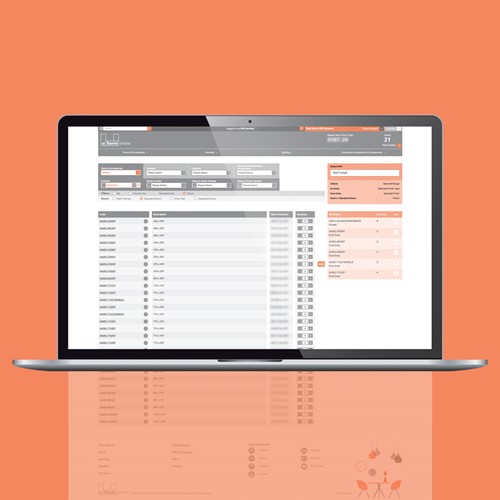
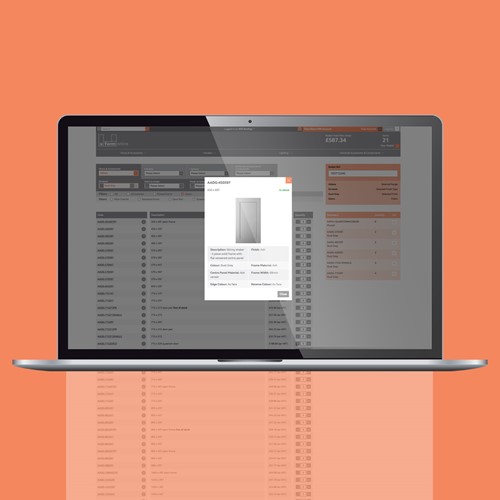
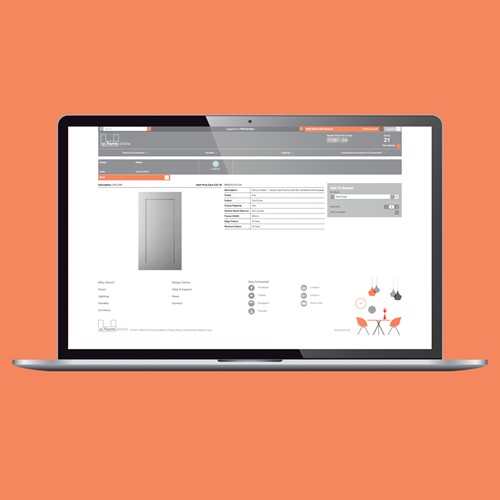
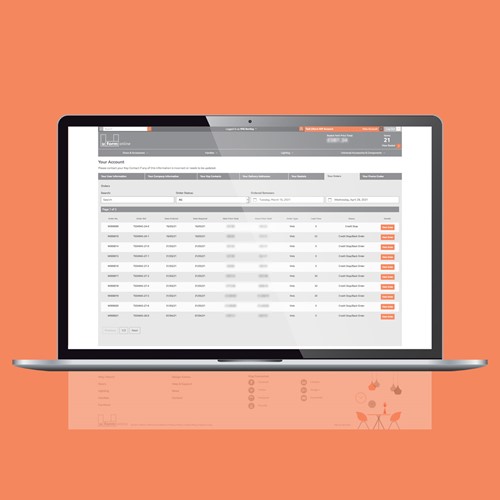
Case Study 2
Premier Workwear’s marketing resource section allows resellers and end users to access an array of assets from lifestyle and flat shot photography in high and low resolutions. Logged in users can download digital files or order physical items such as brochures and swatches, using a simple cart. Then there’s a sophisticated personalisation tool which allows resellers to pick any digital brochure, then to add and position their own logo and contact details.
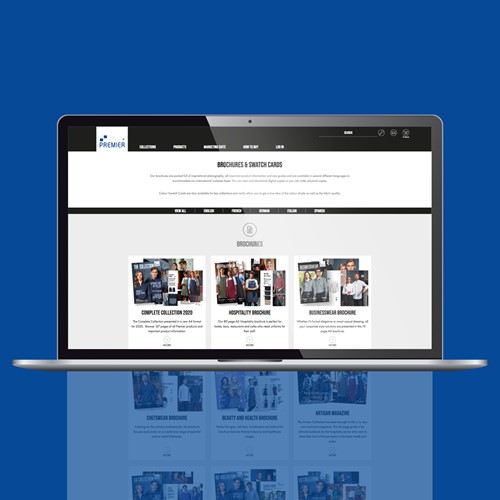
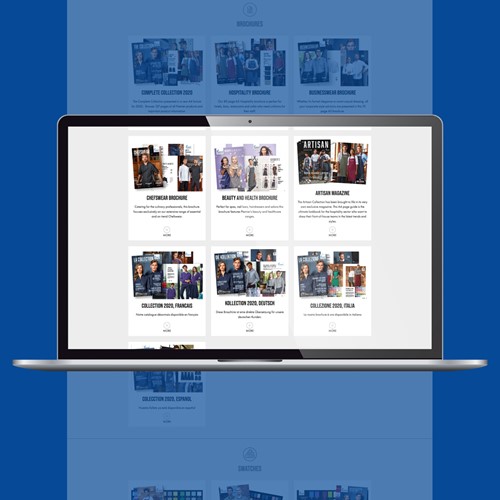

Case study 3
Timco are a leading distributor of screws and fastenings to the building trade supplying a customer base of hardware stores and builders merchants across the UK and Ireland. These customers typically build up a cart throughout the day with hundreds or even thousands of their customers’ orders, so the spreadsheet style order entry screens we’ve developed for Timco allows them to enter orders very quickly. They often know the product codes, certainly of key sellers, and they definitely know what an ‘Advanced Woodscrew’ or a ‘Cable Tie’ looks like so they don’t need to see pictures or specs, so the product information pages, which are very detailed and include specs and downloads, are behind the order entry page and are accessed by clicking the product code. We’ve built a complex pricing engine which gives logged in users customer specific prices with all their various discounts built in, and quantity price break points for volume orders which is incentivised to maximise order value. The site includes a comprehensive customer account section which is integrated with their ERP for stock and pricing data and their CRM for customer data. One of the bespoke features we’ve developed for Timco is the concept of lists, this allows users to create and save as many lists as they like. These can be retrieved and then amended before creating as a new order which is especially efficient for repeat orders, for example where a reseller makes a regular weekly order to restock they can just retrieve this list but then modify according to needs rather than build a whole new order from scratch, bearing in mind orders often run to thousands of lines.

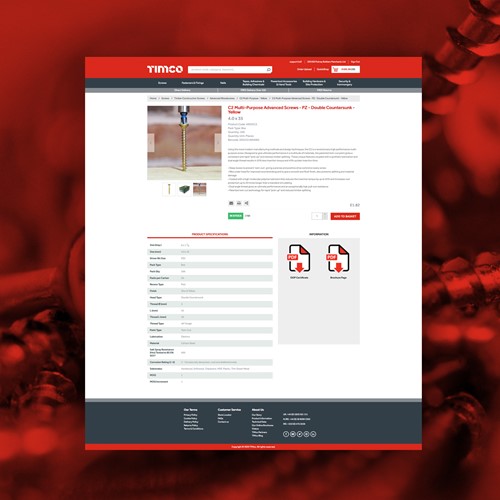

The results
The proof is in the pudding when it comes to the commercial gains from an effective B2B ecommerce solution. Before we starting working for Timco they had a Magento solution with an atypical catalogue hierarchy which wasn’t very efficient or user friendly and was handling less than 10% of the business’s sales. The business owner could see huge potential in both increasing online sales but also in the savings to be made by moving customers online for stock, product and price enquiries. He could also see a really significant benefit of getting customers to enter their own orders which were being keyed-in by the sales team either over the phone or by transcribing faxed orders. The new, bespoke solution we’ve developed now handles over 50% of all the business's orders which represents growth of over 500%. In peak months, obviously accelerated by the pandemic, online sales have been nearer to 80%.


